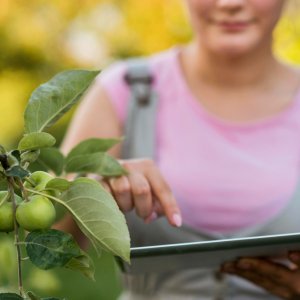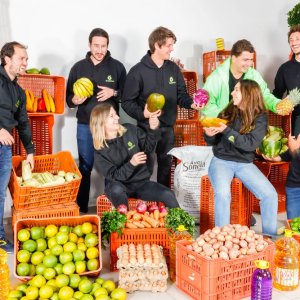Sustainability in Mexico’s Agro Sector

STORY INLINE POST
Globally, between 25% to 30% of the food produced annually for human consumption is lost or wasted:
-
This is equivalent to about 1 billion tons of food worldwide, including 30% of cereals, 40-50% of root crops, fruits, vegetables and some seeds.
-
FAO estimates that this food would be enough to feed 2 billion people. [1]
-
In 2022, Mexico exported agri-food products worth US$24 billion, according to the Ministry of Agriculture. [2]
-
Losses due to difficulties in the fruit and vegetable supply chain are quantified at around 9%, which generates a cost of more than US$2 billion per year in the Mexican market. [3]
What Can Be Done?
There are already several solutions in the market that can be used, such as:
-
Application of sustainable and friendly technology that allows us to reduce the risks that current conditions demand
-
Handling and classification appropriate to the destination of the products
-
Disinfection methods that reduce the use of water
-
Natural base coatings, such as, ethylene filters and sachets
-
MAP technologies
-
Systems that optimize air flow in containers
Mexican exporters have already implemented several of these solutions. However, many of these actions that have already been taken are not well known among the international buyers and even less by end consumers. Exporters and importers can only improve sustainability by working together on all issues. That is when solid forward steps can be taken and sustainable and social impact becomes visible.
For this reason, an important event has been planned in the heart of the fruit import world in Rotterdam, the Netherlands, in February 2023, coordinated by the United Producers of Mexico and the Embassy of Mexico in the Netherlands: Forum On Sustainable & Social Impact on Agriculture in Mexico.
This Forum will bring together importers and fruit exporters from Mexico to learn from each other on what has already been done. Three national growers and exporters associations – avocado, mango and berries – will present their programs that have already been implemented.
Participating Export Organizations:
-
EMEX - mango growers and exporters organization
-
APEAJAL – avocado growers and exporters organization
-
ANEBERRIES – berry growers and exporters organization
These different agro sectors in Mexico have already implemented a wide array of concrete actions in the field and in the post-harvest processes to improve the efficiency in the entire chain; for example, to reduce water usage in the orchard as well as deforestation. Last week, in a conversation with growers, a comparison was made in regard to the use of water during the production of different produce. The general idea is that avocados require a significant amount of water usage in the field, which is what we have heard for years through mainstream media. Surprisingly, it turns out that there are many fruits and especially vegetables that we consume almost on a daily basis that require much more water to be produced than avocados. We are not even speaking about meat production, where every kilo of beef uses almost 20 times more liters of water than avocado production. Even the production of a simple soda requires more water than producing strawberries.
|
Food Item |
Serving Size |
Water Footprint |
|
Steak (beef) |
6 ounces |
674 gallons |
|
Hamburger |
1 (includes bread, meat, lettuce, tomato) |
660 gallons |
|
Ham (pork) |
3 ounces |
135 gallons |
|
Mango |
4 ounces |
55 gallons |
|
Eggs |
1 egg |
52 gallons |
|
Soda |
17 ounces |
46 gallons |
|
Avocado |
4 ounces |
35 gallons |
|
Coffee |
1 cup |
34 gallons |
|
Wine |
1 glass |
34 gallons |
|
Strawberry |
4 ounces |
10 gallons |
*Source: https://www.watercalculator.org/water-footprint-of-food-guide/
The Effect of Negative Media Coverage
Looking at this table, we can see the effect of the impression among the general public that one or two documentaries about avocados have generated, without an objective comparison with other foods that are consumed daily to put the data on water usage of one fruit or vegetable into perspective.
There are many more “sustainability myths” in the air that need to be dispelled and addressed, especially since the future of food production at the global level is expected to become a more complicated issue. Surely, we all need to participate in sustainability as well as the social effects of our consumption. It is necessary to keep buyers and consumers informed in all areas of the chain.
At the moment we can observe that there is a considerable percentage of fruits and vegetables that never even reach the market, especially in markets of what we call developed countries. This happens for several reasons including consumers demanding perfect-looking produce, which causes supermarkets to reject any fruit or vegetable that does not look perfect. As a result, the supermarket simply returns the “non-qualifying” produce back to the distributor, who then simply charges the grower for not sending perfect-picture fruits, as the grower is expected to always produce perfect fruits or vegetables in the current adverse growing conditions. There is still a long way to go regarding sustainable practices. If all parties involved, from grower to end consumer, become more aware of the actions that can be taken at each level and implement real changes, an ever-growing world population can benefit from these actions.
























